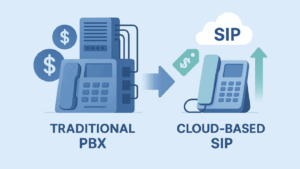Quick Guide: SIP Trunk Basics

Quick Guide: SIP Trunk Basics
The percentage of North American companies using SIP trunks or Session Initiation Protocol trunking and traditional T-1s will just about by 2015 according to a survey by Infonetics Research. This is a major technological shift for the telecommunications industry. Whether or not you are planning to implement SIP trunks soon, it is good to have an understanding of the basics.
What is SIP?
To understand “SIP Trunk,” you first need understand “SIP”. SIP has recently become the protocol of choice for making phone calls over a data network. SIP stands for Session Initiation Protocol and it is the core technology used for establishing a voice communication session over a data network, such as the Internet. SIP sessions can support regular phone calls or conference calls with many participants. Other Unified Communications (UC) features can also be made available over a SIP trunk.
What Is SIP Trunking?
A SIP Trunk is a group of SIP channels. Each channel can handle one call, similar to an a traditional analog telephone line. The difference is, rather than a physical wire a SIP channel is a virtual connection that routes voice traffic to the PSTN (public switched telephone network) through the provider’s gateway.
Why Convert Use to SIP Trunks?
SIP trunking is almost always significantly less expensive than traditional telephone service. SIP trunking can save clients up to 60% of their monthly telecommunications cost. SIP channels can also be purchased in increments of 1, in contrast to traditional PRI lines that are purchased in groups of 23. This means that SIP customers can get (and pay for) exactly the number of channels they need and can add on at any time. SIP providers also often offer DID and caller ID services.
How many SIP Channels do I need?
The number of SIP channels needed depends on the estimated number of concurrent calls. Most companies do not need a channel for each user, but instead require one SIP trunk for every 2-5 users. Internet bandwidth is also a consideration, so you’ll need to calculate the number of SIP calls your connection can handle. Although most modern high-speed Internet connections can support dozens of simultaneous calls, customers with a high number of expected concurrent calls may need to expand their data circuit.
How much does it cost?
SIP trunk pricing and packaging varies from provider to provider. Some charge per minute, like the traditional analog model, others, including SIP.US charge a flat fee per SIP channel with unlimited usage. In the case of SIP.US long distance to the lower 48 US states and most of Canada is included.
Can I use my PBX with a SIP Trunk?
The answer is likely yes. Most modern PBX systems are SIP enabled and legacy PBX solutions can be connected to SIP trunks using an ATA (analog telephone adapter). SIP trunks can also be used with many hosted PBX solutions.
Hopefully this quick guide has helped clear up the basics about using SIP trunks. It is really not as complex as it seem. If you have questions about how SIP trunking might work for you, please don’t hesitate to reach out to the SIP.US team.



